Aloha to All Seasons: Exploring the Year-Round Beauty of Maui
Maui offers a wide range of activities, including hiking and boat tours for whale-watching. The island is a well-liked tourist destination because of the moderate environment, which varies little throughout the year.
Each season, however, has unique characteristics and recurrent happenings. Want to go snorkeling in Maui? Have you purchased a ticket to a tropical beach where you can sunbathe? Discover when to travel based on your interests and hobbies by reading on.
There is never a bad time to travel to Hawaii. There are just two distinct seasons, winter and summer, and there are only slight temperature variations. Despite being frequent, precipitation is often brief. The sun starts to shine again after a shower.
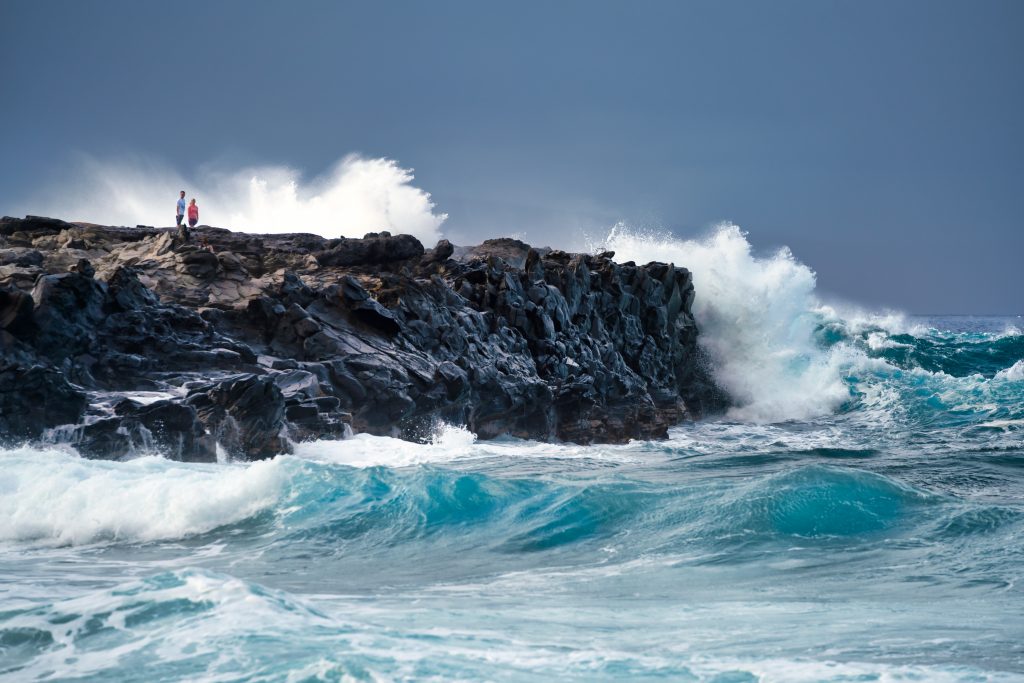
Winter in Maui
Are you sick of the brief days and chilly weather? So run to Hawaii. Surfers and vacationers looking for sun and sand gather here to unwind.
After January 6, prices begin to decline after reaching their peak around Christmas and New Year’s.
The Chinese New Year is the main event in February. The Lah Hing Museum and Cookhouse in Lahaina (858 Front Street) and the Maui Mall in Kahului are the two venues where the celebrations are typically conducted (70 East Kaahumanu Avenue).
You’ll forget the chilly weather, snow, and bulky clothes after taking a journey to Maui. Christmastime temperatures range from 57 F to 71 F degrees, making them perfect for enjoying the beach and participating in water activities.
Lahaina, a historic city with some of Maui’s top restaurants, art galleries, and a wide variety of lodging options, is where you’ll see the most unusual holiday lights.
If you are not staying in a hotel, you can buy the ingredients for a Christmas lunch or dinner in supermarkets. Otherwise, you can always book a table in restaurants that do not close on December 25.
Here are a few options:
Mala Ocean Tavern is an establishment overlooking the sea. It opens at brunch time and its dishes are prepared with the freshest Hawaiian products.
Gannon’s is the perfect option to combine good food and live music every night. Gannon’s has been named one of the 100 best outdoor restaurants in the United States (100 Wailea Golf Club Drive).
The Plantation House is a Chemin de la cuisine restaurant with plenty of Mediterranean dishes. Here the sunsets will leave you breathless (2000 Plantation Club Dr, Lahaina).
Kitchen 5315, Hawaiian recipes with a touch of Asia. Located inside the Napili Shores resort (5315 Lower Honoapiilani Rd #153, Lahaina).
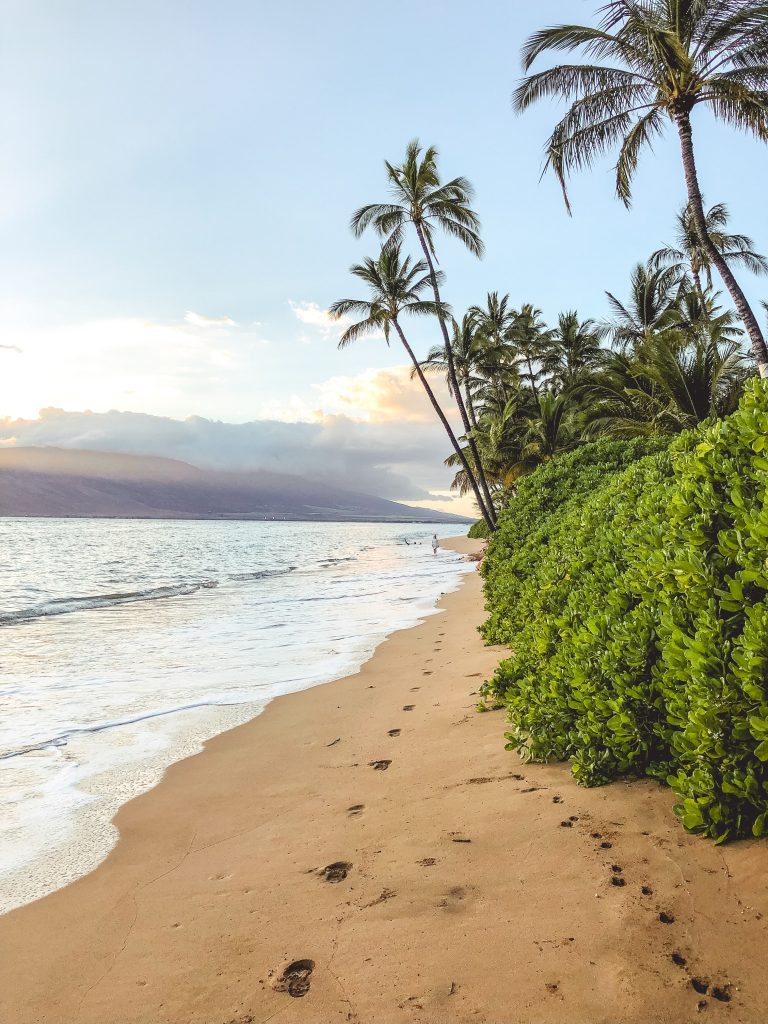
Spring in Maui
Summer and winter are the peak travel seasons for the island. Although spring is the off-season, a vacation is still worthwhile.
A good reason is the flowering of the jacaranda, a subtropical tree native to South America. The beautiful lavender-colored flowers are mostly seen on the slopes of Mount Haleakala and inland areas.
If you are a nature lover, I recommend you visit the Upcountry, home of the paniolos, the Hawaiian cowboys. Livestock isn’t the only ones that have acclimatized well—strawberries also thrive in this area of Maui. Farms in Kula Country offer a service called “Strawberry U-Pick”.
In essence, you get a little basket and choose your own strawberries, which you then consume. Typically, the visit includes a description of how this delicacy is grown. It’s a pleasant pastime that’s ideal for families visiting Maui.
Ideally, if you’re traveling to Maui in March, your trip will fall during the Ocean and Whale Arts Festival. Whales go to Hawaii’s warm, shallow waters in the early winter to mate, give birth, and care for their young.
The festival, which normally takes place at the start of the month and lasts for two days, includes events including photography displays, kid-friendly ocean art competitions, speeches, and more.
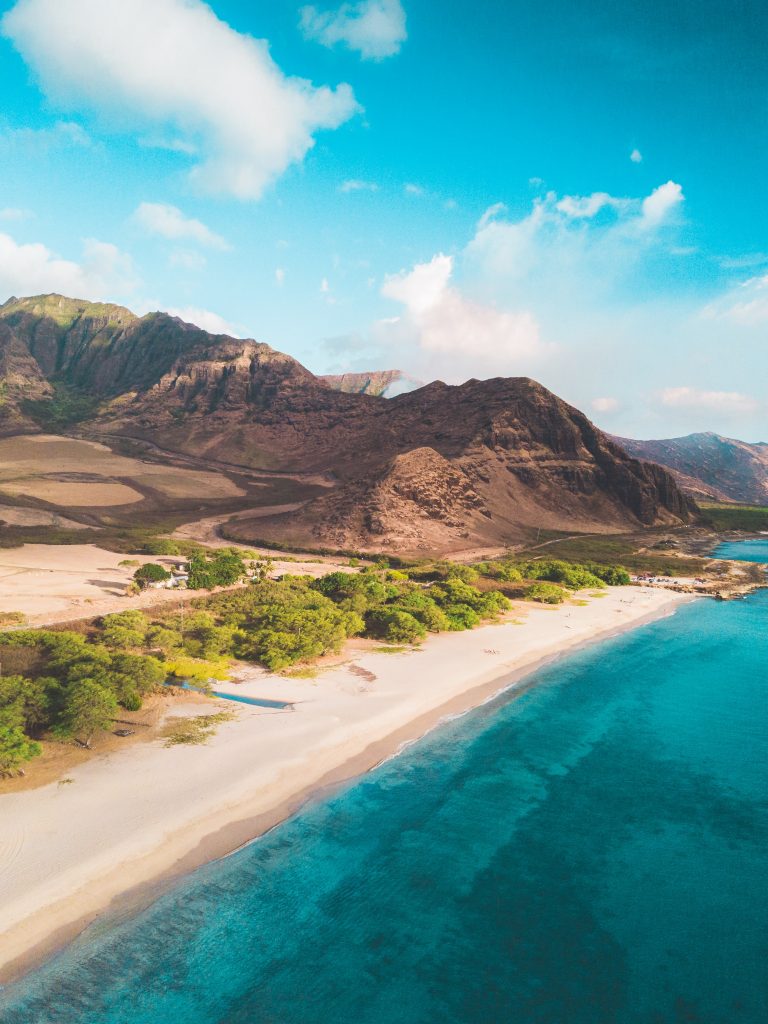
Maui in the Summer
The majority of visitors to the island at this time of year are families from the US mainland. Summer implies weaker currents, which surfers typically dislike but which those looking for relaxation or a tranquil swim in the clear waters like.
The Waa Kiakahi Canoe Festival, a celebration of the traditional techniques of watercraft transportation, is one of the highlights. Wa’a Kaikahi is the Hawaiian word for single-mast canoe. It’s worth seeing even if you don’t go. Usually, Kaanapali Beach or another neighboring beach serves as the departure point.
The 11th of June is Kamehameha Day, which is a significant occasion. This day is dedicated to the same-named monarch, who was the first ruler of Hawaii and is renowned for uniting the islands in 1810. On this day, leis are placed on his statues (Hawaiian flower garlands). Parades and live traditional music are additional features.
Don’t miss the Kapalua Wine and Food Festival for local cuisine. At the stunning Kapalua resort, local, national, and international vendors sell their items. It takes place in June.
Hawaiian Music
You can easily conjure up images of the South Sea Islands in turquoise waters, windswept palm palms, white coral beaches, crashing waves, and friendly Polynesians in your head by simply closing your eyes and listening to a wonderful Hawaiian song. However, the depth of thought is substantially greater for native Hawaiians. His music is a reflection of his islands’ cultural background.
When an old Hawaiian had anything to say that he felt he could not adequately express in any other way, he would sing. He sang lullabies for his children and serenades to his loved ones in addition to his prayers. Songs about valiant soldiers, war tragedies, and even predictions were all present. In actuality, there was a song for almost every situation throughout the day.
The History
History and other significant information were committed to memory and passed down from generation to generation through the use of such musical recitation. Hawaiian chiefs kept chanters specifically for singing their names and announcing their ancestry.
How did this early music sound? It wasn’t at all like contemporary Hawaiian music. Due to its tiny tonal range—often just two or three—it would seem rather monotonous to Western ears.
When referring to songs, the Hawaiian used the word “mele”, which is a homonym for “poetry.” However, due to associations with foreign cultures, apples have come to mean “song.” Hawaiian songs, therefore, make extensive use of figurative language, as was typical of ancient poetry. Songs that seem to depict objects like flowers or locations, for instance, may be making references to individuals and feelings.
There are two main categories used to categorize these songs or poems: “mele oli” (songs without accompaniment) and “mele hula” (those accompanied by rhythm).
Ballads, prayers, prophecies, dirges, and lesser secular songs made up the unaccompanied songs. To sustain the exceptionally extended phrases, this kind of singing requires a deep chest, a natural vocal range, and superb breath control. Except for natural breath-holding intervals, the tone was kept general, and there was frequently a little trill after the conclusion of the phrase. The unaccompanied song, or “mele oli,” is a dying art that is only known to a select few today.
On the other hand, the “mele hula” was distinguished by a vigorous rhythmic gait. The singer would occasionally only perform poems using his hands and body. He also employed numerous rhythmic instruments at other times. The contemporary hula was invented before this bouncy song.
Ancient hula was regarded as such a magnificent art that numerous taboos were associated with it to prevent destruction. While they awaited acceptance into the hula organization, candidates stayed in a hula school under stringent guidelines and underwent demanding training.
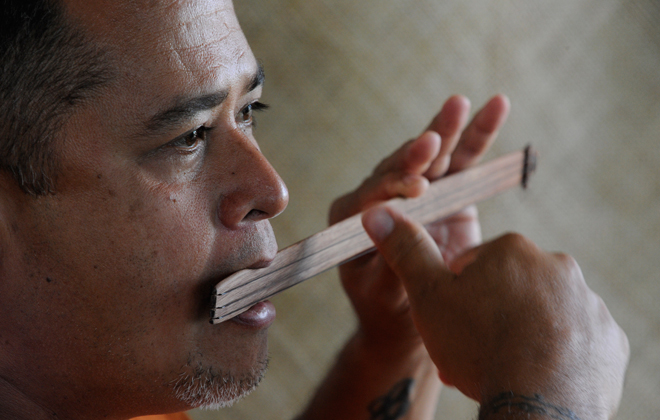
Ancient Hawaiian musical instruments are still in use today. The “ukeke,” the sole major stringed instrument, was made in two different ways.
The long ukeke was a thin, flexible wood slat on which two coconut fiber strings were strung and connected with pegs to produce the correct pitches at intervals of a second or quarter. A third string was tuned to a third by the other guy. Both kinds of instruments were played by placing the top strings close to the lips, humming or singing into the instrument, and moving the fingers over the strings.
The nose flute was one of the oddest instruments in the orchestra of antiquity. It was constructed from a bamboo knot with two finger holes and a nose hole on opposite ends. Another odd wind instrument looked like a prehistoric ocarina. It was formed of a gourd that had three holes bored through it, two of which were used for finger closure and one of which was placed up to the nose to be blown into.
The selection of percussion instruments was enormous! There were a variety of drums constructed from Lagenaria, wood, and coconut shells. Typically, firmly stretched sagri skins were used to cover them at the ends.The nose flute was one of the oddest instruments in the orchestra of antiquity. It was constructed from a bamboo knot with two finger holes and a nose hole on opposite ends. Another odd wind instrument looked like a prehistoric ocarina. It was formed of a gourd that had three holes bored through it, two of which were used for finger closure and one of which was placed up to the nose to be blown into.
The selection of percussion instruments was enormous! There were a variety of drums constructed from Lagenaria, wood, and coconut shells. Typically, firmly stretched sagri skins were used to cover them at the ends.
The “pahu” drum, which was brought from Tahiti between the eleventh and fourteenth centuries, is notable among these. It was constructed out of breadfruit wood or hollow coconuts. The upper hollow was filled with sagri, while the lower portion was beautifully carved. Together with the little coconut drum, this drum is still in use today.
Hawaiian Music Today
But how did this song-and-dance poetry, with its constrained tonal range, evolve into the melodic, charming music of present-day Hawaii?
After the first Europeans arrived on these islands in 1778, ancient music gave way to modern. The men from whaling ships and missionary groups quickly had a significant impact on Hawaiian culture.
The musical tastes of the passing sailors were as varied as their nationalities, and the music-loving Hawaiians rapidly assimilated the songs and made them their own. Many of the popular South Sea songs we know today have their roots in those early travelers’ simple songs.
They also modified a lot of traditional Hawaiian songs. For instance, Hole Waimea is a traditional Hawaiian song that has been modernized from an old mele. There is also the unforgettable refrain Waipio, which was originally a very old song and is named after a lovely valley.
Missionaries started creating an alphabet for the unwritten Hawaiian language in the ten years following 1820. They rapidly taught their eager students hymns and straightforward folk songs while also introducing the eight-tone scale. Even though the fact that harmony was unknown in prehistoric Hawaii, it was well and early learned. Hawaiians excel at the tenor part, which many composers believe to be the most challenging to perform.
In the 19th century, Kamehameha V invited the young German musician Henry Berger to Hawaii, where he served as court musician and music instructor to members of the royal family. He founded the now-famous Royal Hawaiian Band, which continues to this day to perform Hawaiian dances and songs as it welcomes arriving visitors at the port. When they are leaving, he says “Aloha,” which is Hawaiian for “goodbye,” “welcome,” or “love.”
After Berger’s impact, a vast body of songwriting developed that was, in fact, Hawaiian music in the way it is understood today. Queen Lilioukalani of Hawaii, who was the final queen to rule Hawaii, was one of the monarchs of Berger’s time who had tremendous musical talent. She was the creator of Aloha Oe, the most beloved and well-known song in Hawaii.
The song’s music was influenced by an old ballad. Lilioukalani, however, was inspired to write the sentimental lyrics after witnessing an emotional farewell scene in 1878 between an officer in the king’s army and a native maiden of the Maunawili homestead in Waimanalo, Oahu. She created sheet music for the song’s entirety using musical alone. In 1883, Berger orchestrated it, and the Royal Hawaiian Band performed it in San Francisco under his direction. It became well-liked right away.
Hawaiians already had a particularly strong affinity for the guitar by the second half of the nineteenth century. They play it as a single instrument with tenderness and sweetness that perfectly capture the delicateness of their feelings, he wrote in 1886. Furthermore, a Portuguese immigrant who traveled to these shores in 1879 brought the diminutive four-string guitar known as the ukulele to the heart of Hawaii.
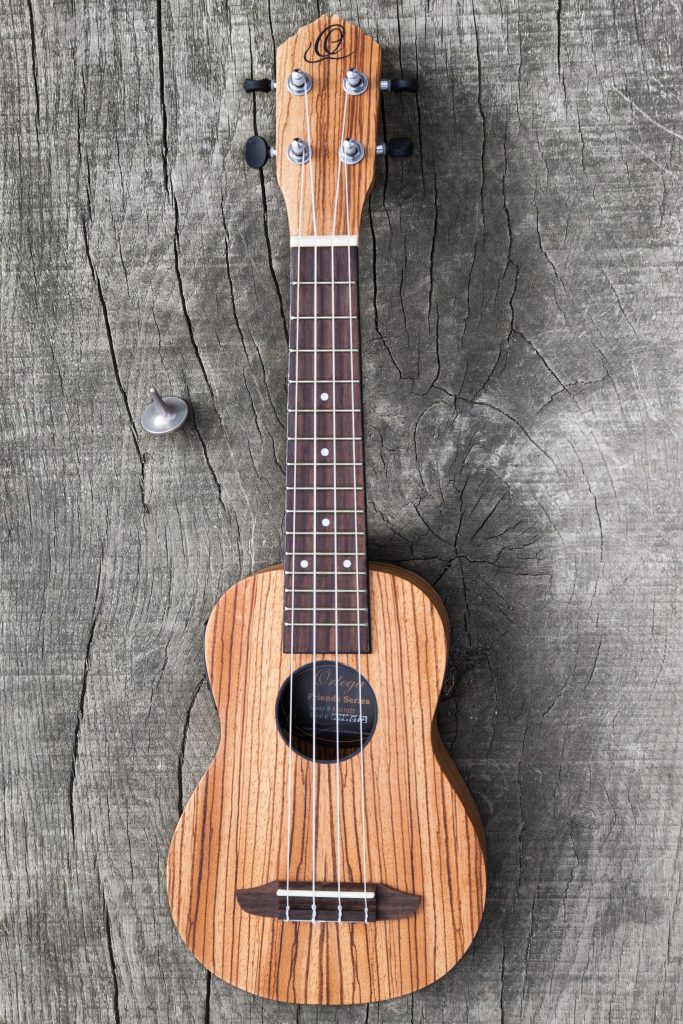
The word “ukulele” in Portuguese is “cavaquinhos,” which translates to “little piece of wood.” However, creative Hawaiians swiftly gave it the name “ukulele,” which means “jumping flea,” due to the noisy way it was played. Although the ukulele was always considered to be solely a supporting instrument, today there are quite a few true masters who play it solo, expertly executing everything from the hula to the classics. Children often play the ukulele while walking down the street because they find it so enjoyable.
The steel guitar is one instrument, nevertheless, that was created exclusively by Hawaiian inventiveness. When Joseph Kekuku, a student at the Kamehameha School, was playing an old guitar in the decade that followed 1890, he pressed the back of a comb against the strings as he plucked them. This is when he first heard the indescribably lovely sound of the steel guitar, which has since been referred to as the sound of Hawaii.
During World War I, Hawaiian music started to gain appeal on a global scale. One of Hawaii’s most effective forms of advertising is phonograph recordings. Who hasn’t heard recordings of Na Lei O Hawaii, Blue Hawaii, Little Grass Shack, Sweet Leilani, or the lovely Hawaiian Wedding Song, all of which are traditional Hawaiian plays?
The story of the Hawaiians has endured over time thanks to their creations, love of art, and emotions, much to the delight of the entire globe. Every time Hawaiian music is heard, musical memories of a bygone age keep flowing through, creating a reflection that is continuously regenerated.
